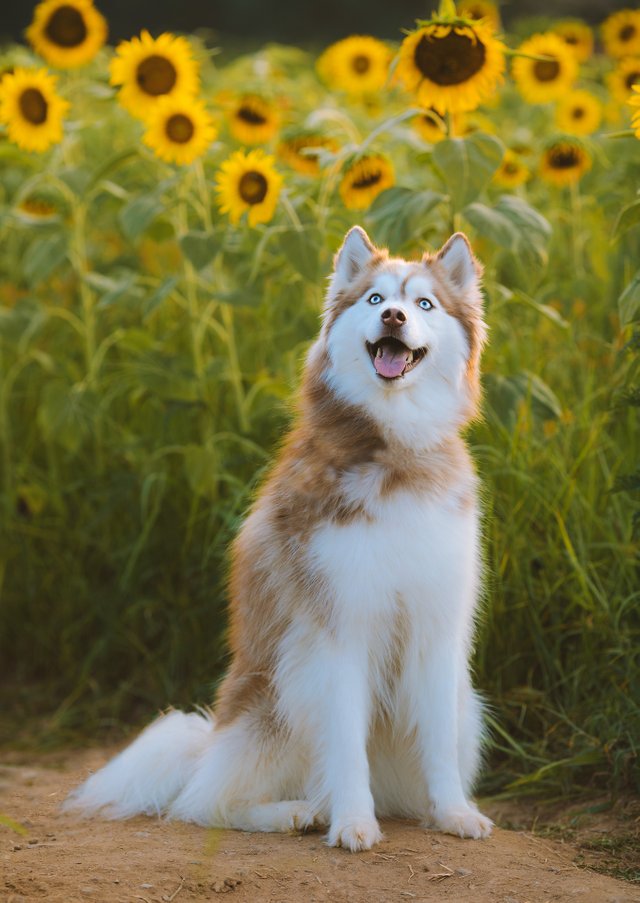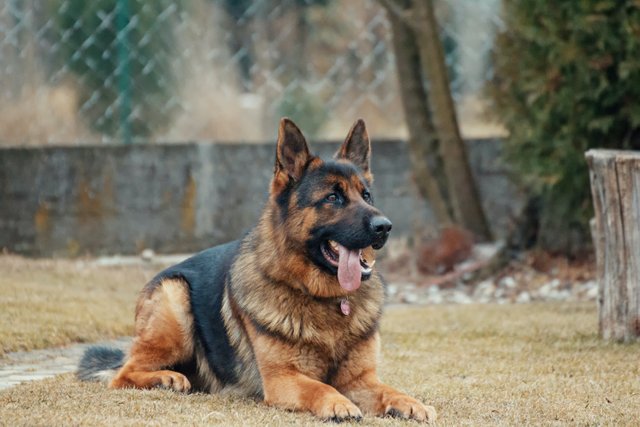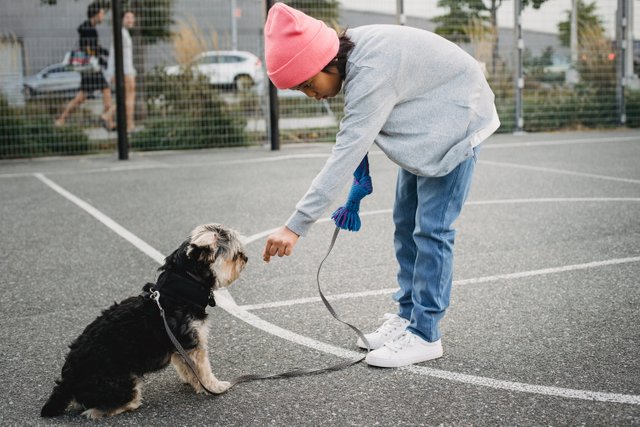To a loving owner, a dog gives unconditional love and friendship. In comparison to an untrained dog, a well-trained dog enhances your enjoyment and satisfaction tenfold. A well-trained dog is a more happier and comfortable pet, according to research. You'll be amazed at how quickly a dog learns to obey your commands when you use the right training tactics. The following are some excellent dog training methods for teaching your dog essential obedience skills:
1.THE SIT COMMAND -

This is the most fundamental and popular command to teach your dog, and it should certainly be the first one you teach him. In most cases, using a treat as a reward for excellent behavior works effectively. To keep your dog stable, connect a leash to his collar. Show your dog a treat and hold it over his head, prompting him to look up, then say "Sit." Your dog will sometimes sit immediately just by holding the treat above his head. If he refuses to sit, lay your other hand on his back and gently press down while saying "Sit." Once he sits, give him the treat right away and praise him by saying "Good Boy" in a cheerful voice while enthusiastically petting him to show him you're satisfied with his reaction to your "Sit" order. It's vital to give him a reward as soon as he responds appropriately, so he understands why he's getting one.
2.THE DOWN COMMAND

You can go on to the "Down" command once your dog has learned the "Sit" command. This is also achieved with the aid of a treat. To begin, tell your dog to "Sit." Do not reward him for sitting by giving him a treat. You should have a reward in your hand and hold it in front of him, very close to the floor, and say "Down" while he is sitting. If necessary, put your other hand on your dog's shoulders and gently press down until he lies down, or gently tug on his leash downward. Once your dog has lied down, immediately praise him with a treat and say "Good Boy" in a cheerful tone while enthusiastically petting him to show him you are delighted with his reaction to your "Down" command. To let your pet know you're happy with his answer to your instruction, the tone of your voice is vital.
3.STAY COMMAND -

The "Stay" command is more difficult than the "Sit" and "Down" commands. It's crucial to start working with your dog on the "Stay" command at the right time of the day. It's important to know your own dog and recognize when he's in a relaxed or mellow mood. This training should not begin when your dog is overly excited or playful. When teaching the "Stay" command, use a treat as you did with the previous commands. Give your dog the sit or down command to begin this training. When he's seated or lying down, say "Stay" and raise your hand as if you're telling someone to come to a standstill. Give the dog a reward and pet him if he doesn't move for 4 or 5 seconds. Only compliment him if he stays for the whole 4 or 5 seconds. Try again if he does not comply with your command. Increase the amount of time he must "Stay" before you offer him praise after he understands the concept. To get him to stay, repeat the "Stay" command a few times and put your hand in a stop position. Give him the "Stay" order when he begins to comprehend, then gently back away a few feet, gradually increasing the distance until he masters the "Stay" command. When training your dog, remember to be patient with him. If today's training doesn't go well today, try again tomorrow. Patience and perseverance is always rewarded.
4.USE OF TRADITIONAL TRAINING METHODS
When I say "traditional" training approaches, I'm referring to a few fundamental methods for training your dog.
- Patience is the first and most important factor. When training your dog new things, you must be patient with him. Various canines learn at different speeds, just like people. Be patient if your dog is having trouble learning a new command. Do not shout at your dog or bully him. It's sometimes preferable to take a break from training and resume on another day.
-Another crucial aspect of dog training is voice inflection. I refer to this as speaking in a "Happy Voice" to reward your dog when he responds to your command correctly. This entails speaking with a little higher pitched tone as well as a somewhat louder or excited way than usual.
-Another frequent or conventional method of educating your dog is to use dog treats. Although rewards are helpful in the early stages of learning a command, you don't want to have to carry a pocket full of treats about with you at all times in order for your dog to heed your commands. Once your dog has learned a new command, gradually remove the rewards and replace them with a "Good Boy" and enthusiastic petting.
-It is important that everyone in your family use the exact same commands so your dog does not become confused on what is being asked of him e.g. "lie down" vs. "down". It doesn't matter what the command is, as long as everyone is using the same command.
- Finally, you must make your dog's training sessions enjoyable. He should link training with having a good time. So, following a training session, spend ten or fifteen minutes playing with your dog to make the experience pleasurable for both you and your dog.
Having a well-trained dog is one of life's joys.
These are just a handful of the dog training methods I've come across throughout the years. Do you want to consider the benefit of watching and hearing genuine training videos for your dog? If you do, learn more about a fantastic brain training program for your dog, click here https://bit.ly/2U9sRbf.